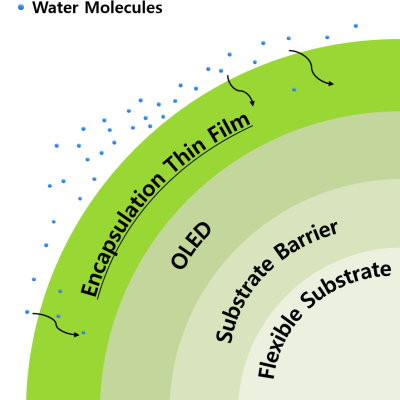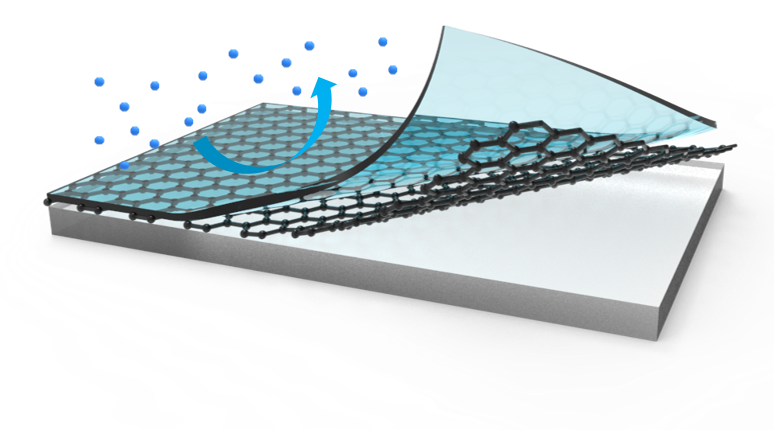Atomic Layer Deposition for OLED Encapsulation
OLEDs are attractive for future displays owing to their superior properties including high transparency and flexibility and low power consumption, which are not achieved when using conventional liquid crystal displays. However, the organic materials used as the self-emitting component in OLED displays are highly sensitive to water due to the reaction of organic molecules with intruding water, thus worsening the light-emitting properties. Thus, encapsulation that can effectively block moisture is necessary for OLED displays.
Moisture penetration through encapsulation is due mainly to the defects in the films because moisture permeation is driven by these defects. Therefore, depositing a thin film with small defect density is highly required to develop an excellent moisture barrier for OLED encapsulation.
ALD offers various advantages for an encapsulation layer, such as large-area uniformity, pinhole-free thin film formation, and low deposition temperature. Furthermore, void defect formation on the encapsulation layer, which causes critical degradation of water vapor transmission rates (WVTR), is avoidable owing to the surface self-saturated reaction mechanism of ALD. Moreover, ALD can ensure a low-defect density, resulting in low moisture permeation.

Encapsulation Using Nanomaterials

Graphene has been assumed as an ideal gas permeation barrier material. Despite the thickness of a single-layer graphene is only a few Ångström, the delocalized electron cloud generated by the graphene π orbital blocks the gap of the hexagonal ring. The repelling field from the cloud does not allow the penetration of gas molecules and can theoretically block small gas molecules even with H2 and He.
Nevertheless, the CVD-grown graphene has not been used as OLED encapsulant because transferring a graphene on the substrate (rigid or flexible) without wrinkle formation or tears is challenging. Hence, most studies on the OLED encapsulation based on graphene have been focused on the synthesis of graphene flake with a polymer. However, the WVTRs of the polymer composite systems did not meet the requirements for OLED encapsulation because of numerous water paths in the barrier film.
A composite layer of atomic layer deposition-grown Al2O3 (ALD Al2O3) on chemical vapor deposition-grown graphene (CVD graphene) was fabricated to encapsulate an organic OLED. NO2 functionalization was adopted to improve the nucleation and film quality of ALD Al2O3 on the CVD graphene. The resulting Al2O3 on the NO2-functionalized graphene exhibited increased film density and decreased porosity and roughness when compared with that without functionalization. These enhanced properties satisfy the requirements for the encapsulation layers.
Copyrightⓒ 2018-2025. Taewook Nam. All right reserved.